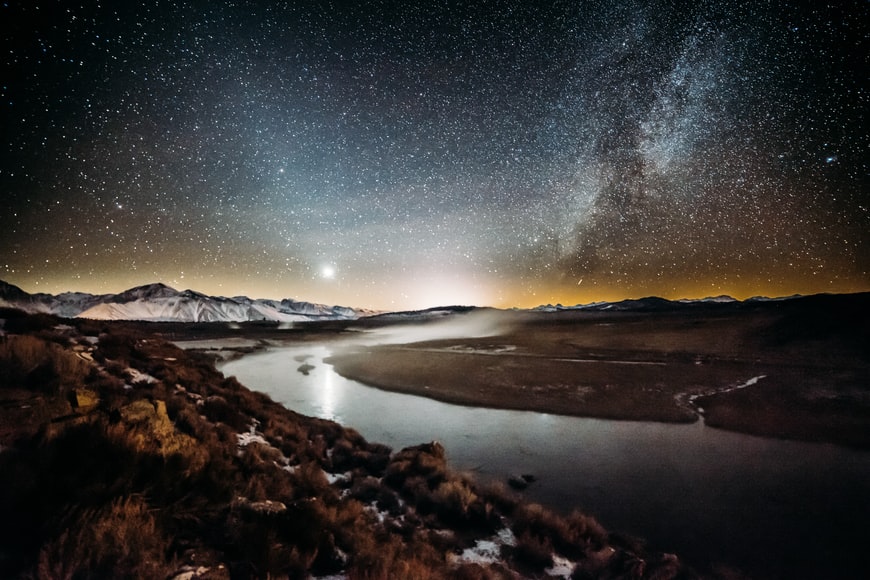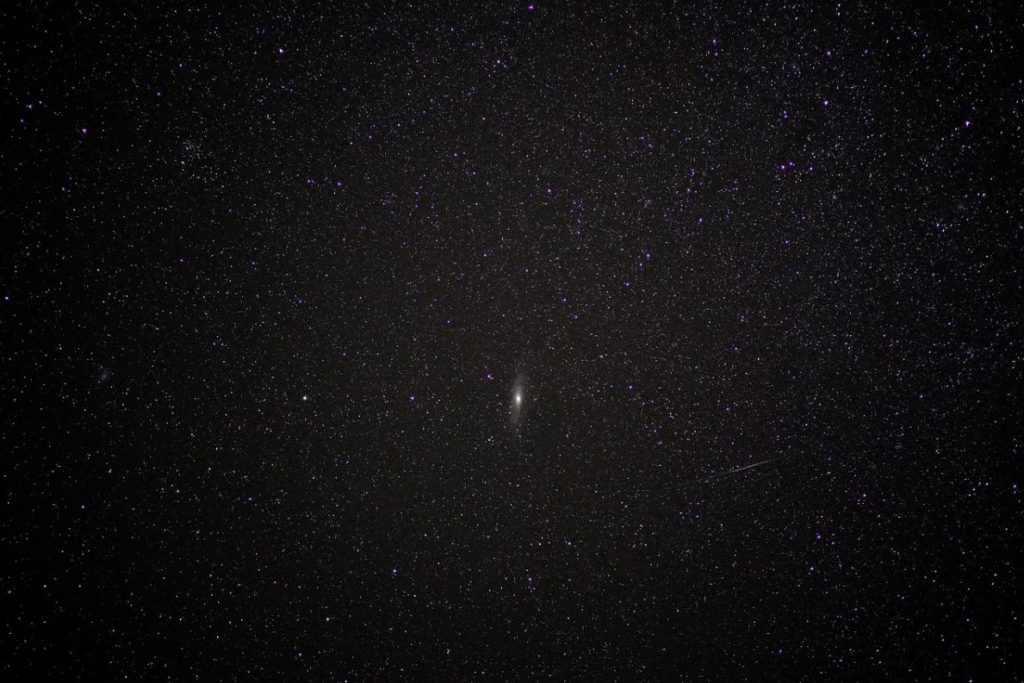Stars, planets, and other interstellar matter are littered across the night sky. They’re all held together into a system by gravity. This gravitational-bound system is called a galaxy. As of the present discoveries, there are approximately 100 billion galaxies out there. Most of them could be seen only through the telescope. Fortunately, eight galaxies are scattered across the night sky that we can see with our naked eyes.
Here are the eight galaxies you can view even without a telescope while mapping out the night sky.
Milky Way
The Milky Way is the galaxy where our Solar System belongs. It’s the second-largest galaxy, just after the Andromeda Galaxy, in the Local Group of galaxies. It’s described as a hazy band of light with a 30° wide arch across the night sky. Although all the individual stars in the sky available to be viewed by the naked eye are part of the galaxy, the term “Milky Way” is only used to describe the hazy band of light.
The Milky Way, with its relatively low surface brightness, depends on its visibility on the background light. For it to be visible, the sky needs to be darker and away from brightly lit areas. The best place to view it is from rural areas with no light pollution, and the moon is below the horizon. It’s harder to view it from urban areas with light pollution or areas with bright moonlight. It’s said that only less than two-thirds of Earth’s population can see the Milky Way from their homes while the remaining one-third cannot due to the light pollution.
Large Magellanic Cloud
The Large Magellanic Cloud (LMC) is one of the closest galaxies to the Milky Way, with a distance of around 163,000 light-years. It is also a satellite galaxy of the Milky Way. It’s the fourth-largest galaxy right next to the Triangulum Galaxy in the Local Group, with a diameter of about 14,000 light-years. The LMC is visible to the naked eye as a faint “cloud” and can be viewed from the Earth’s southern hemisphere. It extends across the constellations Dorado and Mensa and is visible from dark areas without light pollution. On the other hand, you can click the link if you want to see the best types of telescope filters.
Small Magellanic Cloud
The Small Magellanic Cloud (SMC), also known as Nubecula Minor, is a dwarf irregular galaxy with a diameter of about 7,000 light-years that is visible to the naked eye. It’s also one of the nearest galaxies to the Milky Way, with a distance of approximately 200,000 light-years. The Nubecula Minor can be viewed from the entire Southern Hemisphere and is located just across the Tucana and Hydrus constellations. It is seen as a faint hazy patch that looks very much like a Milky Way detached piece. The SMC is best seen far away from light pollution and under a clear moonless sky.
Andromeda Galaxy
The Andromeda Galaxy is a barred spiral galaxy called the Andromeda Nebula initially. It’s also known as Messier 31, M31, or NGC 224. The Andromeda Galaxy is the nearest major galaxy to the Milky Way at approximately 2.5 million light-years from Earth. It can be seen in the area just within the Andromeda constellation. It can be seen on Earth with the naked eye during moonless nights, and since it has an apparent magnitude of 3.4, it can even be viewed from areas with moderate light pollution
Triangulum Galaxy
The Triangulum Galaxy is the third-largest member of the Local Group of galaxies right behind the Milky Way. It’s a spiral galaxy located in the constellation Triangulum and has a distance of approximately 2.73 million light-years from Earth. Like the Andromeda Galaxy, it can be viewed with the naked eye. Those with 20/20 vision can view the galaxy under excellent viewing conditions, such as being under a very dark clear sky without light pollution.
Centaurus A
Centaurus A is a starburst galaxy in Centaurus’s constellation that has a distance of 10–16 million light-years from Earth. It’s also known as NGC 5128 or Caldwell 77. It’s the fifth-brightest galaxy in the sky, but it’s only visible from the southern hemisphere and low northern latitudes.
Messier 81
Messier 81, which is also called the NGC 3031 or Bode’s Galaxy, is a grand design spiral galaxy with a diameter of 90,000 light-years. From Earth, it has a distance of about 12 million light-years away. The galaxy can be in the constellation Ursa Major. Although the galaxy has a large size and relatively high brightness, it cannot be seen easily by the unaided eye unless you are a highly experienced amateur astronomer. The Messier 81 can be viewed under exceptional observing conditions with a very dark sky and away from light pollution and is generally observable for those in the northern hemisphere. It is only visible to those in a limited latitude range just south of the equator in the southern hemisphere.
If you want another informative post, we recommend you also read our article about how to properly set up a Vivitar telescope.



